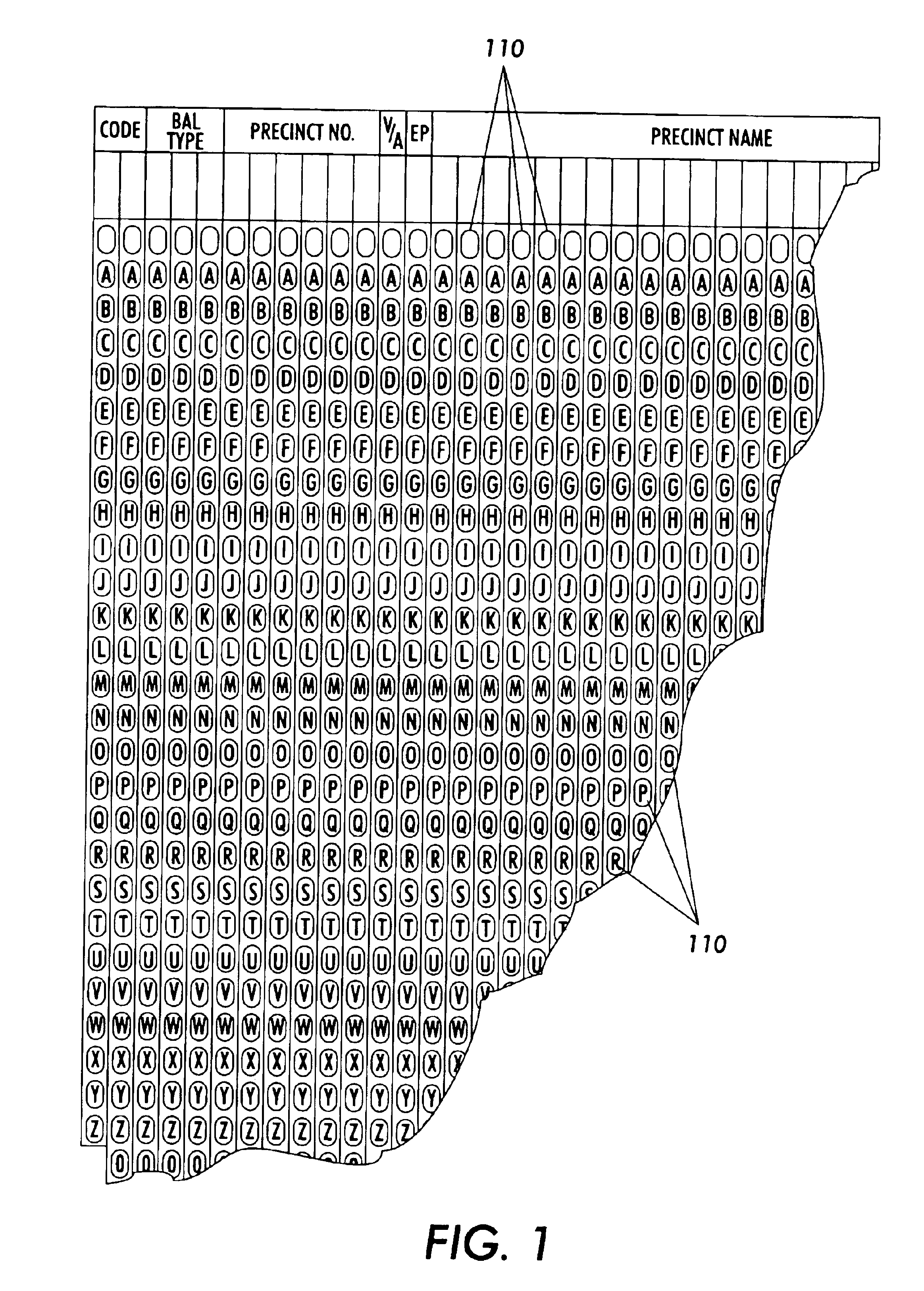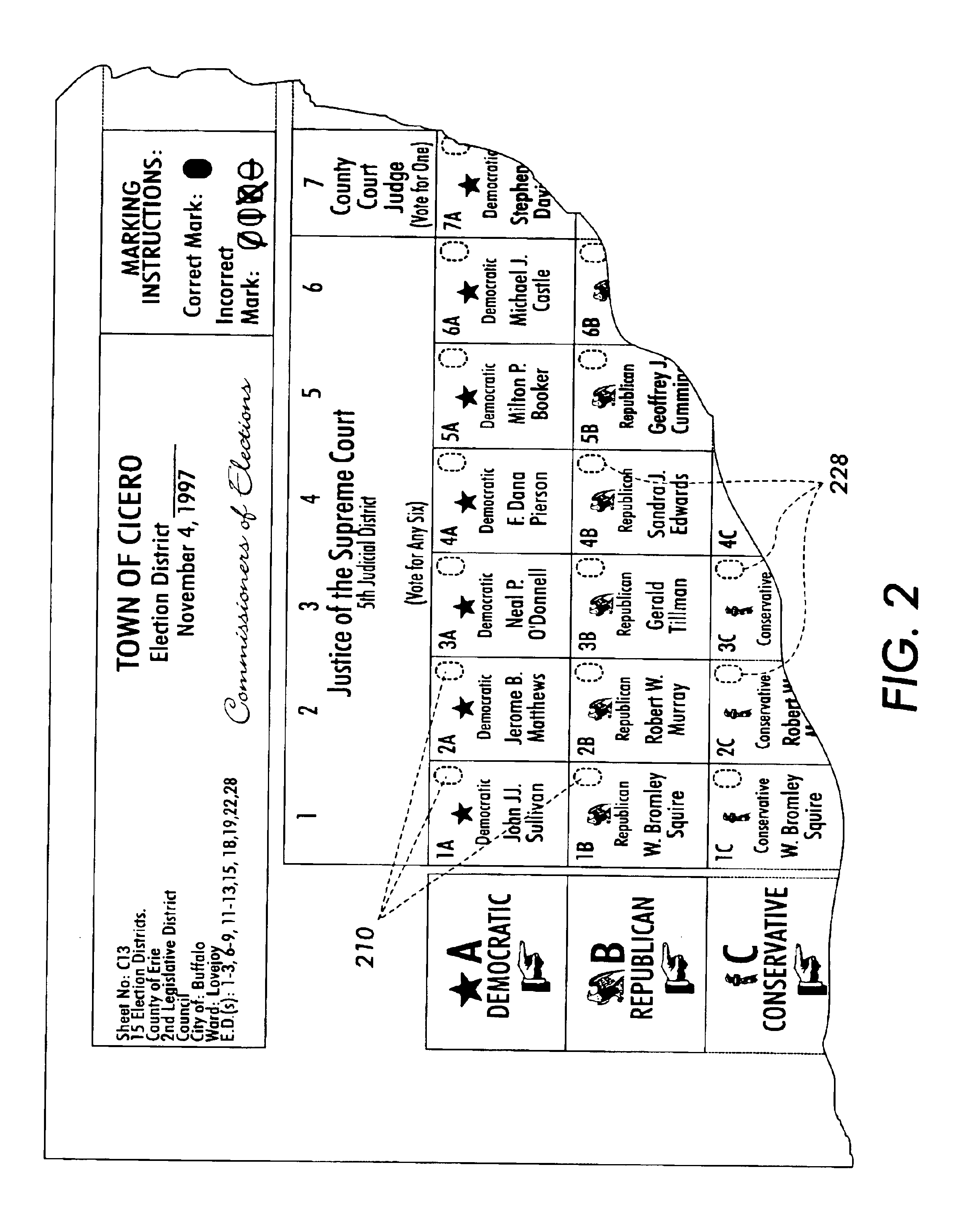Ballot form and method for making and using same
a technology applied in the field of making and using same, can solve the problems of inability to read the colors in the red color spectrum, errors in scanning, and inability to read the colors made with felt-tip pens containing water-based ink
- Summary
- Abstract
- Description
- Claims
- Application Information
AI Technical Summary
Benefits of technology
Problems solved by technology
Method used
Image
Examples
Embodiment Construction
[0053]For a general understanding of the present invention, reference is made to the drawings. In the drawings, like reference numerals have been used throughout to designate identical elements.
[0054]As used herein, the term “bubble” or “response bubble” is intended to refer to an element printed or otherwise rendered on a substrate such as a document, wherein the bubble defines a region within which a mark may be placed for optical scanning and recognition of the mark.
[0055]The term “ballot” is intended to refer to any hard copy document or similar substrate that has printed thereon at least one candidate or proposition for selection or approval by a voter.
[0056]The term “line density” is intended to refer to the physical width of a line or other mark on paper, i.e. the distance from one edge of the mark in contrast with the approximately white paper, across the mark, to the other edge of the mark in contrast with the approximately white paper.
[0057]The term “commercial imposition ...
PUM
 Login to View More
Login to View More Abstract
Description
Claims
Application Information
 Login to View More
Login to View More - R&D
- Intellectual Property
- Life Sciences
- Materials
- Tech Scout
- Unparalleled Data Quality
- Higher Quality Content
- 60% Fewer Hallucinations
Browse by: Latest US Patents, China's latest patents, Technical Efficacy Thesaurus, Application Domain, Technology Topic, Popular Technical Reports.
© 2025 PatSnap. All rights reserved.Legal|Privacy policy|Modern Slavery Act Transparency Statement|Sitemap|About US| Contact US: help@patsnap.com



